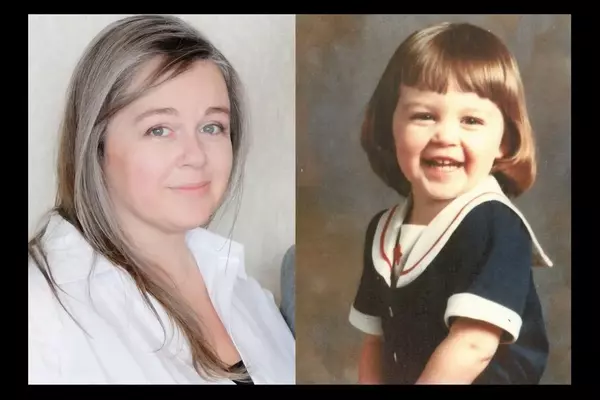Since taking power last year, Treasurer Jim Chalmers and Minister for Women Katy Gallagher have repeatedly said Australians could expect a "strong budget" for women, promising to put them at the centre of the government's decision-making and address economic inequality.
On Tuesday, Senator Gallagher, who is also the finance minister, went further and claimed Australians would struggle to find a budget that does more for women.
So what's in it for women?
JobSeeker payment
The government is increasing the base rate of support payments — including JobSeeker, Youth Allowance and Austudy — by $40 per fortnight in September.
It will need to pass legislation in parliament, but the government is investing $4.9 billion over 5 years from 2022–23.
The government is also expanding the eligibility for the existing higher rate of JobSeeker to recipients 55 to 59 years old who have received a payment for nine or more consecutive months.
Around 55 per cent of those eligible are women and they will soon receive an increase in their base rate of payment of $92.10 per fortnight — putting them in line with those on the payment aged 60 and over.
"The majority of people aged 55 and over on JobSeeker are women, many with little to no savings or superannuation, and who are at risk of homelessness," the treasurer said.
"So tonight, we’re extending the extra support for those aged 60 and over to include Australians aged 55 and over — more help for some of the most vulnerable in our community."
Single-parent payment
Prior to the budget, the government announced it is expanding access to the single parenting payment, of which women make up 91.1 per cent of eligible single parents.
The cut-off age for the payments will be raised from 8 to 14 years old and is costing the government an extra $1.9 billion over four years.
From September, around 57,000 eligible single parents will transition to the payment, providing an extra $176.90 per fortnight for some families.
Those eligible will be able to earn at least $52.60 more per fortnight before losing any of their payment.
Workforce
Women make up the majority of workers in the care and support economy.
The government is investing $72.4 million to "support, build and retain" the early childhood education and care workforce, as it faces shortages.
The government will also set national targets for women apprentices and trainees working on major government-funded construction and information and communications technology projects.
That's set to increase annually and aims to triple participation by 2030 to reach 12 per cent for women in construction and 10 per cent for women in trade apprenticeships.
The budget has outlined support for organisations with expertise in supporting women in the workplace, with grant funding of $5 million over 3 years to further support women in male-dominated trade apprenticeships.
The budget also funds the previously announced pay rise for aged care workers.
Ending violence against women
The government is investing an additional $589.3 million over four years to meet its goal of ending violence against women "within a generation" — a timeline it has not defined.
While this is in addition to the $1.7 billion announced in the October budget, it will not meet desperate calls from the sector, which says it will take around $1 billion a year to achieve this.
The funding announcement includes $159 million to support frontline service delivery in partnership with state and territory governments for an additional two years.
The budget promises to "strengthen and harmonise sexual assault and consent laws" and improve the family law system, and outlines $18.6 million to prevent and address sexual violence.
The budget outlines support for visa holders experiencing domestic and family violence by expanding the family violence provisions within the Migration Regulations 1994.
There is also $194 million in funding going towards the establishment of a dedicated Aboriginal and Torres Strait Islander Action Plan, promising to support culturally responsive healing programs, addressing immediate safety concerns and community-led family safety services for First Nations children and families affected by family violence.
Women make up two-thirds of cyberbullying and adult cyber abuse complaints. The government will provide an additional $134.1 million over four years for the Office of the eSafety Commissioner, including educational and investigatory activities.
Abortion and contraception
There is not a single mention of "abortion" or "contraceptive care" in any of the budget papers — let alone the women's budget statement.
This is despite having a National Women's Health Strategy which outlines a national approach to improving health for women and girls, and names these areas as key benchmarks.
Last week, Health Minister Mark Butler flagged the government would wait for the recommendations of a Senate inquiry into reproductive health care before making any major decisions.
The inquiry held several public hearings highlighting the urgency for government funding and changes to increase accessibility to abortion and contraceptive care, but the budget does not make any mention of how it will do this.
Health care
The government has committed $26.4 million over four years to research and data collection activities to address significant gaps in diagnosis and outcomes for women.
From July, the government will subsidise the storage costs of eggs, sperm or embryos for Australians with cancer, and at risk of passing on genetic diseases or conditions who have undergone genetic testing covered by the Medicare Benefits Schedule.
The government has provided $16.8 million to introduce a new Medicare Benefits Schedule item for gene expression profiling test to help determine a patient's risk of recurrent breast cancer — set to assist an additional 18,000 patients over 4 years.
The Australian Breastfeeding Association will also receive $5.3 million in funding to continue support for its National Breastfeeding Helpline, and the Australian Red Cross Lifeblood will receive $6.0 million to expand delivery of donor milk across Australia.
If you are unable to load the form, click here.







